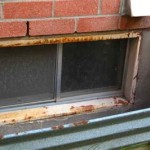How to Put a Bathroom in a Basement Without Plumbing
Installing a bathroom in a basement without plumbing may seem like a daunting task, but it's certainly possible with careful planning and some creative solutions. Here's a comprehensive guide to help you navigate this project:
1. Assess the Feasibility
Before embarking on any work, assess the feasibility of the project. Consider the size of the basement, access to utilities, and drainage options. If the basement is too small or has limited access to power and water, it may not be suitable for a bathroom.
2. Plan the Layout
Plan the layout of your bathroom carefully to optimize space and functionality. Determine the placement of the toilet, sink, and shower or tub, considering the location of existing walls, windows, and any potential obstacles.
3. Install a Macerating Toilet
Since traditional toilets require plumbing, a macerating toilet is an ideal solution for a bathroom without plumbing. This type of toilet grinds waste into a fine slurry, which can then be pumped through a small-diameter pipe to a sewage ejector pump or an outdoor septic tank.
4. Use a Portable Sink
For the sink, consider using a portable sink with a built-in water tank and pump. These sinks typically have a gravity drain that can be connected to a bucket or holding tank. Alternatively, you can install a faucet with a self-contained water reservoir and pump.
5. Implement a Shower or Tub Alternative
For a shower or tub, explore non-traditional options. A portable shower stall with a gravity drain can be connected to a holding tank or pump similar to the portable sink. Consider a composting toilet or a dry-flush toilet as alternatives to a traditional flushing toilet.
6. Address Ventilation
Proper ventilation is crucial for a basement bathroom. Install a ventilation fan to circulate air and prevent moisture buildup. The fan should be vented directly to the outside of the house.
7. Consider Lighting
Natural light may not be available in a basement bathroom, so plan for adequate lighting. Install recessed lighting or light fixtures on the ceiling and walls to provide sufficient illumination.
8. Install a Sewage Ejector Pump (Optional)
If the drainage from the macerating toilet or holding tank cannot be gravity-drained to a sewage line, a sewage ejector pump will be necessary. This pump will lift and expel the waste uphill to the main sewer line.
9. Maintain the Bathroom
Regular maintenance is essential to ensure the functionality and cleanliness of your bathroom. Empty the holding tanks for the portable sink and shower regularly, and service the macerating toilet according to the manufacturer's instructions. Clean and disinfect all surfaces as needed.
Conclusion
Installing a bathroom in a basement without plumbing requires careful planning and alternative solutions. By incorporating a macerating toilet, portable sink, and non-traditional shower or tub options, you can create a functional and comfortable bathroom space. Proper ventilation, lighting, and maintenance will ensure the long-term success of your project.

How To Diy Bathroom In Basement Without Breaking Concrete

How To Diy Bathroom In Basement Without Breaking Concrete

How To Diy Bathroom In Basement Without Breaking Concrete

How To Add A Bathroom In Basement Without Breaking Concrete

No Rough In Problem Our Diy Bathroom Basement From A Closest Cheap And Beautiful This Life

How To Put A Bathroom In Basement Without Plumbing 2024

How To Diy Bathroom In Basement Without Breaking Concrete

A Basement Bathroom Renovation Merrypad

How To Install A Shower In The Basement Without Breaking Concrete Upgradedhome Com

How To Install A New Bathroom On Concrete Slab Or In Basement
See Also








